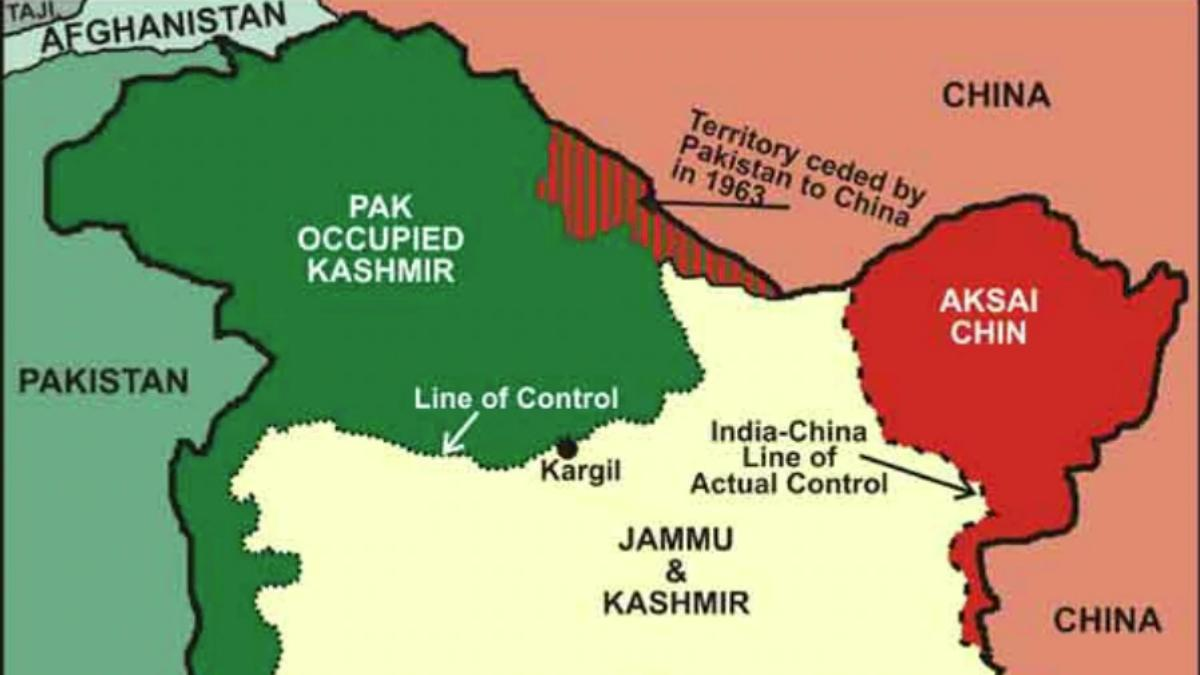In a significant development, India and China are moving toward completing their disengagement process in the Depsang and Demchok regions of Eastern Ladakh. The coordinated process, which started on October 22, 2024, aims to conclude by October 29, and, according to Army sources, patrols are expected to resume by the month’s end. This move is set to restore the status quo to the pre-April 2020 situation, marking a positive turn in India-China border relations.
India-China Disengagement Process: Why Now?
The disengagement process between India and China has been in the making since tensions rose along the Line of Actual Control (LAC) in 2020, leading to a need for practical solutions to de-escalate the situation. As the final disengagement steps unfold, coordinated patrolling and confidence-building discussions at various levels aim to prevent future face-offs. The disengagement specifically targets two remaining friction points, Depsang and Demchok, enabling both nations to bring back a degree of calm to these areas.

What the Disengagement Means for India-China Relations
The current framework was finalized through diplomatic and military discussions at the Corps Commander level, reflecting a blend of diplomatic strategy and military planning. Under this agreement, Indian patrols will soon access previously restricted points, specifically Patrolling Points (PP) 10, 11, 11A, 12, and 13 in Depsang, where movement had been hindered since early 2020. The People’s Liberation Army (PLA) of China had blocked these patrol routes beyond the Y-junction in the critical Depsang plains, making this development a strategic relief for India.
However, it’s worth noting that while these two regions—Depsang and Demchok—are undergoing change, other buffer zones created under prior disengagement agreements, such as those in Galwan Valley and Pangong Tso, remain restricted. As disengagement progresses in these specific areas, both sides have structured a strategic framework to keep patrols spaced and coordinated, aiming to avoid close encounters and maintain harmony along the border.

India-China and the Strategic Importance of Depsang and Demchok
Depsang and Demchok are significant for both India and China due to their strategic locations and historical importance. Depsang, particularly, is a gateway to the crucial Daulat Beg Oldi airstrip, offering India critical access to high-altitude operations near the Karakoram Range. Demchok, on the other hand, remains essential for its proximity to critical water resources and its location near populated areas in Ladakh. Maintaining stability in these areas has thus been vital for both India’s and China’s regional strategies.
The disengagement will not only allow for greater maneuverability for Indian forces but is also likely to set a precedent for de-escalating tensions in other friction zones along the LAC.
How the India-China Disengagement Process Unfolds
The disengagement framework involves careful spacing and timing of patrols, minimizing risks of confrontation. According to sources, patrols from both sides will be coordinated at specific intervals, monitored through regular ground-level discussions between military representatives from India and China. This coordination is expected to help establish trust and avoid unexpected flare-ups.
Despite these advancements, India-China relations have complex challenges that stretch beyond troop withdrawals. Talks continue on a broader scale regarding other friction zones along the LAC, with a special focus on Arunachal Pradesh, where tension points like Yangtse have been areas of periodic clashes. Sources deny any “quid pro quo” arrangement in Arunachal Pradesh in exchange for disengagement progress at Depsang, signaling a clear stance by India in managing multiple fronts without compromising territorial claims.
India-China Dialogue and Historical Context of LAC Mapping
The India-China border is a complex issue rooted in decades of disputes and claims. In 2002, both countries attempted to map the LAC in the middle and western sectors. Although the middle sector mapping was accomplished without significant discord, China raised concerns over India’s claims in Depsang, creating a long-standing roadblock in western sector negotiations. Since then, efforts to reach a mutually acceptable resolution have been ongoing but progress remains intermittent.
Recent high-level talks between Prime Minister Narendra Modi and Chinese President Xi Jinping signal optimism toward stabilizing the border issue. As a result, Special Representatives on the boundary question are scheduled to meet soon, tasked with managing peace in the border areas and pursuing fair, reasonable resolutions to the boundary disputes.
India-China Disengagement: Looking Ahead
While the disengagement at Depsang and Demchok signifies a positive step forward, the journey toward complete stability along the LAC is far from over. The de-induction process, which involves withdrawing and managing military deployments in these regions, will be gradual and likely require continuous dialogue to avoid misunderstandings. As patrols resume in Depsang, the structure in place may offer valuable insights into how future disengagements can be managed.
This move is also a test for the resilience of the disengagement agreement, as it requires both India and China to operate with a high degree of trust and transparency. If successful, the model could serve as a framework for further de-escalation efforts in other tense zones along the India-China border.
Conclusion: A Turning Point in India-China Relations?
The October 2024 disengagement at Depsang and Demchok marks a strategic turning point for India-China relations, a sign that diplomatic and military cooperation can coexist to resolve intricate border issues. By reinstating access to essential patrol points and committing to structured interactions, both sides show a willingness to step back from a continuous cycle of tension.
However, with other areas yet to see a similar level of disengagement, India-China relations still have significant milestones to achieve. The ongoing dialogues, coupled with future meetings between Special Representatives, will play a crucial role in shaping a stable future along the LAC. As India and China navigate the nuances of disengagement, this recent agreement underscores a pivotal moment where collaboration and diplomacy have the potential to redefine peace along one of the world’s most sensitive borders.

